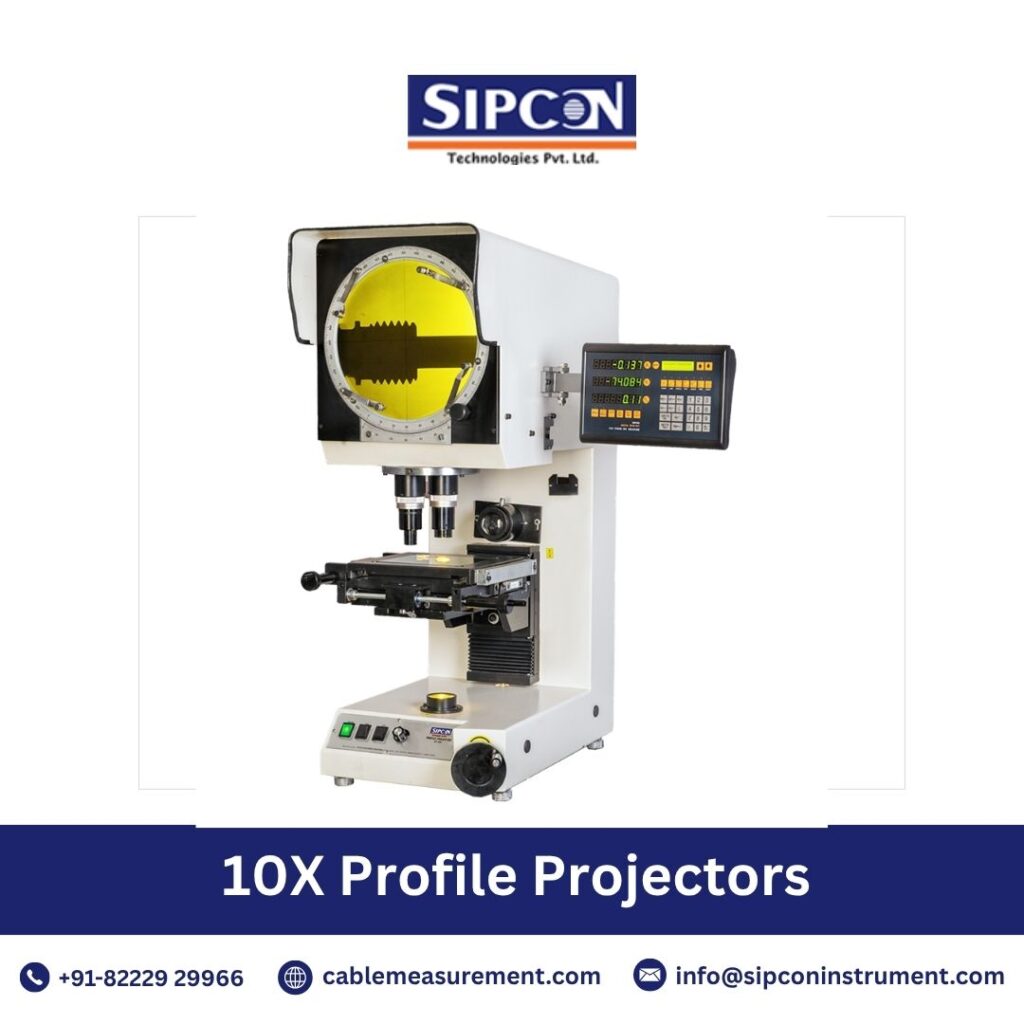In the world of cable manufacturing and quality control, precision isn’t just a feature—it’s a necessity. Every inch of XLPE (cross-linked polyethylene) cable must meet exact standards, especially when used in critical sectors like power transmission, infrastructure, and telecommunications. One of the most effective ways to maintain precision during slicing and inspection is through the integration of a 10X profile projector, a highly reliable optical measurement instrument.
This blog explores how this tool transforms the manual slicing process of XLPE cables by enhancing accuracy, quality control, and operational efficiency.
Understanding Manual XLPE Cable Slicing
Before delving into the benefits of optical measurement, it’s important to understand what manual XLPE cable slicing entails. XLPE cables, known for their superior insulation, flexibility, and thermal resistance, are often inspected and tested by slicing through sections of the cable to evaluate thickness, cross-sectional symmetry, and insulation integrity.
A manual XLPE cable slicer is used in many labs and manufacturing units to cut precise samples for analysis. However, while slicing is mechanical, inspecting the sliced sample to micrometer precision requires advanced optical assistance. That’s where the profile projector comes into play.
The Role of Optical Measurement in Cable Inspection
A profile projector, also known as an optical comparator, is an inspection device that magnifies the profile of a sample and projects it onto a screen. The 10X profile projector, in particular, offers 10 times magnification, enabling high-resolution viewing and precise dimensional measurements.
When integrated into the cable inspection process, this equipment acts as a bridge between manual slicing and digital precision. Operators can visually assess the cable’s structure and overlay dimensional tolerances directly on the projected image to identify deviations, thickness variations, or manufacturing defects.
Why Choose a 10X Profile Projector?
- Enhanced Accuracy and Precision
With 10X magnification, even the slightest defect or deviation from design can be observed clearly. This is especially useful when analyzing insulation thickness, conductor positioning, or identifying micro-fractures post-slicing. The projector’s ability to detect minute inconsistencies ensures that cables meet industry safety and performance standards.
- Non-Destructive Analysis
Unlike some testing tools, a profile projector does not alter or damage the sample during measurement. It projects the image of the sliced sample without any physical interaction. This makes it ideal for inspecting high-value cables or critical insulation layers where non-destructive methods are preferred.
- Time-Saving for Quality Control Teams
Manual measurement tools like calipers and micrometers can be time-consuming and error-prone, especially when working with dozens or hundreds of cable slices. A 10X profile projector streamlines this process by providing instant visual feedback and allowing multiple parameters to be measured simultaneously.
- Improved Repeatability in Results
Once set up, the projector provides consistent output, minimizing human error and subjectivity in visual analysis. This repeatability is crucial for manufacturers seeking to comply with strict quality certifications or ISO standards.
- Ideal for Training and Demonstration
New technicians or quality control staff can benefit greatly from the large projection display, which offers a clearer understanding of what an ideal cross-section should look like. Training on real-time visuals enhances skill development and reduces onboarding time.
Use Case: Slicing and Measuring an XLPE Cable
Here’s a practical example: A quality inspector slices a medium-voltage XLPE cable using a manual XLPE cable slicer. Once the cross-sectional sample is prepared, it’s placed on the stage of a 10X profile projector. The magnified image of the cable reveals the thickness of insulation layers, the shape and spacing of conductors, and the roundness of the entire assembly.
Using overlay charts or digital tools built into modern projectors, the inspector compares the sample with engineering drawings or standard templates. If the insulation deviates beyond the permissible tolerance, adjustments can be made in real-time to the slicing machine or extrusion equipment.
Supporting Quality Compliance and Standardization
Many industries require XLPE cables to comply with rigorous testing protocols such as ASTM, IEC, or BIS standards. Integrating a 10X profile projector into the workflow supports such compliance by ensuring dimensional accuracy is documented and traceable. These measurements can also be logged digitally and used in audits or client reports.
Beyond Cable Inspection: Wider Applications
While this blog focuses on cable slicing, the same projector technology is widely used in metalworking, plastic molding, electronics, and precision engineering industries. Anywhere there’s a need to examine surface profiles, edges, or cross-sections, a profile projector provides a versatile, reliable solution.
Conclusion
Precision, consistency, and safety—these are the cornerstones of any cable manufacturing or inspection process. As technology evolves, so do the tools we use to uphold these standards. The 10X profile projector plays an essential role in transforming traditional inspection techniques into high-accuracy processes. When used alongside a manual XLPE cable slicer, it delivers a powerful combination of physical control and optical precision, ensuring that every cable meets its performance promise.
Whether you’re part of a testing lab, a cable production unit, or a quality assurance team, investing in advanced inspection tools like a profile projector can significantly boost your operational confidence and product quality.


